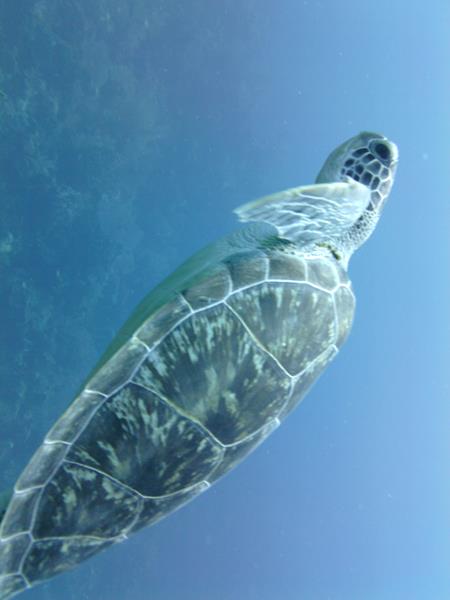![]()
- Time Is Slipping Away
- Cayman Brac Quickly Selling Out
- Navy Seal Museum
- Soft Corals
- Diving in Cuba
- Deep Stops
- ADA Youth Program
- The Second Annual ADA Dive Cruise is ready for booking!!!
- Scuba Certifying Organizations: PADI Is Not the Only Boat Afloat
- My First Live-Aboard
- Use and Care Of Your BCD
- ADA Off-Season Pool Workouts
- Newsletter Delivery Options
- Email or Address Change?
- T-Shirts For Sale
- ADA Guidelines and Policies
The clock is counting down and we are nearing the last chance to renew at a reduced rate.Renew before March 31, 2016 and your membership fee is only $35 for a calendar year of discounts and diving news. After March 31, your annual membership renewal fee is $45.
![]() Your membership includes
periodic eNews emails about club activities as well as
electronic access to The Mouthpiece monthly newsletter.
You may pay by check or online. Go to http://activedivers.org/Membership-Renewal.html
to renew your membership online. To pay by check, mail a
check made out to "Active Divers Association" with the
appropriate amount to:
Your membership includes
periodic eNews emails about club activities as well as
electronic access to The Mouthpiece monthly newsletter.
You may pay by check or online. Go to http://activedivers.org/Membership-Renewal.html
to renew your membership online. To pay by check, mail a
check made out to "Active Divers Association" with the
appropriate amount to:
Dr. Dan Baeza
Membership Chairman
Active Divers Association
7592 Parkview Way
Coral Springs, FL 33065
Be sure to include your snail-mail and email addresses.
![]()
Cayman Brac Selling Out! One Slot Left
--by Daryl Johnson
There is not much time to book the July 9 through July 16 InternationallADA trip to Cayman Brac
The ADA trip package includes the following:
- 7 nights Beach Room
- Breakfast, lunch, dinner daily
- Welcome Rum punch
- Manager's cocktail reception
- Hotel tax and service charges
- Round trip airport transfers
- 6 days of 2-tank morning boat dives.
- Use of tanks, weights, belt and dive computer (No diving the afternoon prior to departure)
There is a non-stop flight from Miami with fares around $350 on Cayman Airways currently available (not included, you must book your own airfare) making this an easy destination to reach. The price is $1465 per person, double occupancy and includes your diving, lodging, and all meals. If you have priced out a Cayman trip lately, you know what a bargain this is.Just click the link http://activedivers.org/CaymanBrac2016.html to put your deposit of $100 down now, with the final balance due April 15, 2016 (checks only accepted for final payment).
![]()
Does anyone know that this museum is right here in South Florida? It’s a great place to visit. It is located at: St. Lucie County, just outside Fort Pierce, Florida.: 3300 N Hwy A1A, Fort Pierce, FL 34949 It opened its doors in 1985
It's open Tuesday through Saturday, from 10 a.m. to 4 p.m. and Sunday from noon to 4 p.m. It's c;osed on Monday. Phone: (772) 595-5845
The museum collection includes a number of rare artifacts dating from the founding of the SEALs, from the days of Scouts and Raiders, through the Underwater Demolition Teams, to recent present-day activities of US Navy SEALs. Original World War II–era obstacles used for demolition training prior to the Normandy landings ("D-Day"). Some of the exhibits you will see are:
- LCPL "the Shark Tooth Boat" used by the UDT in the Pacific Ocean theater of World War II and during the Korean War.
- Patrol Boat River PBR, used during the Vietnam era. These boats had a shallow draft and jet drive making them ideal for insertion and extraction in the rivers and canals of the region. navy_
- Apollo space craft—the actual training devices used by the UDT "frogmen" recovery Teams during the Apollo, Gemini, and Mercury space missions.
- SEAL Delivery Vehicles or SDVs, specifically the MK XII MOD 0, the MARK IX (9), and the MARK VII (7) MOD 0, which are mini-subs that flood inside (the operators wear compressed air tanks). These SDVs are used to clandestinely enter enemy harbors.
- Various SEAL vehicles from operations in Kuwait,
Afghanistan, and Iraq.
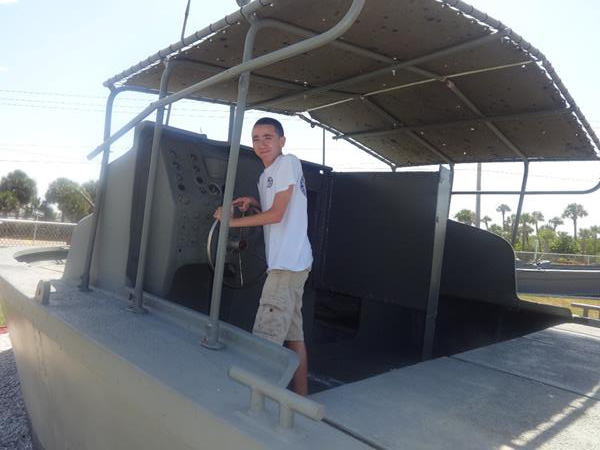
- The Alabama Maersk lifeboat aboard which Somali pirates held Captain Richard Phillips hostage.
- A wall honoring Medal of Honor recipients, with the citations for each one.
- Rare artifacts, equipment and weapons from the founding years during WWII through current engagements in Afghanistan.
Hint: Arrive the last hour and the tour is free. You can go through it in an hour if you don't read placard. I didn't. I like the pictures. At right is a photo of ADA member Blaze piloting some pretty impressive hardware.
![]()
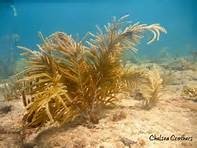
Soft Corals, also known as Octocorallia, do not produce a rigid calcium carbonate skeleton and do not form reefs, though they may be present in a reef ecosystem. Although they are animals, soft corals have a flexible appearance that resemble plants or shrubs.
Essentially, soft corals are colonies of living polyps. The polyps have eight “plant like” tentacles, which is why they are also known as octocorals. One way to differentiate hard corals and soft corals is that hard coral polyps have six tentacles (branches), while soft corals have eight.
Gorgonia, more commonly known as sea fans, are found mostly in the tropics and subtropics around the world. Individual tiny polyps form colonies that are normally erect, flatted, and branching, resembling a fan. Gorgonians include sea whips, sea plumes and sea rods. A colony can be a few inches thick but can extend several feet high.
http://www.sabahnow.com/files/2012/06/Gorgonian-Forest.jpg http://www.naturefoundationsxm.org/images/coral/sea_plumes.jpg
Toadstool corals are found in various shades of brown, tan or green, with white or gold polyps. Toadstools look like toadstools (the classic red with white dot mushroom) with a distinct stalk and cap. As they age their caps fold.
http://freethumbs.dreamstime.com/1772/big/free_17724504.jpg
 Unlike the gorgonians, tree
corals have a stalk with no polyps. Only the
braches have polyps. Tree corals are slow growing and are
found in waters with a lot of movement and current. Tree
corals often provide habitats for juvenile fish.
Unlike the gorgonians, tree
corals have a stalk with no polyps. Only the
braches have polyps. Tree corals are slow growing and are
found in waters with a lot of movement and current. Tree
corals often provide habitats for juvenile fish.
Octocorals look like strange trees and shrubs. Unlike the hard corals, octocorals are unable to build thick limestone skeletons. They are not reef builders, but they are found on reefs and on the ocean floor. The most common octocorals in Florida are sea fans and sea whips.
Source: oceanexplorer.noaa.gov, www.reefs2go.com
![]()
In January, I along with fellow ADA divers Daryl Johnson and Shel Seidman, visited the island of Cuba as part of a government sanctioned program. One of the cities we visited was Maria la Gorda (translation: Fat Mary), a seaside town tucked into a lagoon in the southwest corner of the island. There is a dive operation at Maria la Gorda, so we planned to use the ship’s excursion service to dive it.

But first, let me talk a little bit about the tour. Celestyal Cruise line has created a People-to-People educational exchange program that allows U.S. citizens to visit the island. We flew to Montego Bay, Jamaica and boarded the Celestyal Crystal, a 521 foot, ten deck cruise ship. In addition to visiting Maria la Gorda, the itinerary included two days in Havana, a day in Santiago, and a day in Cienfuegos. Also included were numerous lectures on Cuban culture, economics, and politics, as well as dance lessons, cooking demonstrations, and drink mixology as practiced on the island. Although the ship, built in 1980, was a little dated, it had been recently refurbished and had all the amenities of a modern cruise ship.
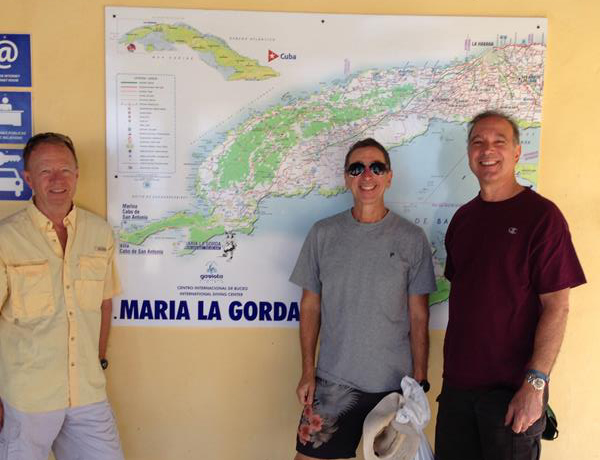
and Dan Baeza
Cuba was amazing. We got a real kick out of seeing the vintage cars parade down the street. The vintage cars are used mainly as tourist taxis. The Cuban people were delighted to engage in conversation.
Now, on to the diving. Because we were unfamiliar with the dive operation, we opted to use the ship’s sanctioned excursion rather than book one on our own. The cost was $135 for what we later found out was a one-tank dive. A bit pricey, but included all the equipment. The equipment consisted of Scubapro BCDs and regulators, Mares foot pocket fins, and various and sundry shorty wetsuits and console gauges. The equipment worked as expected, although the regulators breathed a little hard.
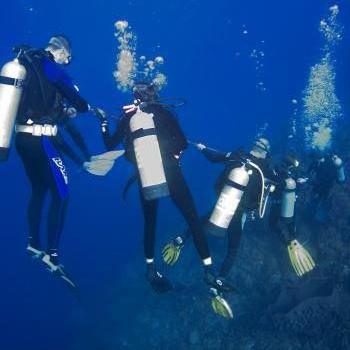 A deep stop is a pause or a
series of pauses on the ascent, prior to any mandatory
stops, such as a safety stop or a decompression stop. The
initial reports about the “effectiveness” of deep stops
come from Hawaiian fishermen (who made up to 12 dives per
day, some at depths of more than 200 feet) and northern
Australian pearl divers, who made 200 to 300 foot,
hour-long dives twice a day, 6 days a week. Both groups
had few cases of the bends.
A deep stop is a pause or a
series of pauses on the ascent, prior to any mandatory
stops, such as a safety stop or a decompression stop. The
initial reports about the “effectiveness” of deep stops
come from Hawaiian fishermen (who made up to 12 dives per
day, some at depths of more than 200 feet) and northern
Australian pearl divers, who made 200 to 300 foot,
hour-long dives twice a day, 6 days a week. Both groups
had few cases of the bends.
The person generally credited with bringing deep stops to the attention of the diving community is Hawaiian ichthyologist and tech diver, Dr. Richard Pyle. Some researches still refer to deep stops as “Pyle stops.” In the 1980s, Dr. Richard Pyle often dived deeper than 200 feet on air. Upon surfacing, he was frequently fatigued and had flu-like symptoms, indicating decompression stress. However, when he was collecting tropical fish, the symptoms were generally not present. To bring the fish to the surface, he made short stops along the way to puncture their swim bladders. The brief stops seemed to make a real difference. Dr. Pyle published his findings in 1995.
![]()
ADA is proud to present a new Youth Program in 2016. The program is designed for preteens ages 10 to teenagers under the age of 18 years old. The cost of membership is just $10 per year.
To apply for the program you must already be certified, (restrictions per PADI regulations)
Age 10-11 may participate on any ADA dive if accompanied by a parent or guardian
Age 12-14 do not need to dive with a parent but must dive with an adult 18 years or older. They will be assigned to an ADA Saftey Officer
Age 15-17 may dive with any certified diver age 15 or older, including other ADA youth members age 15 or older.
New members are encouraged to attend the Scuba Skills Tune Up on Saturday, May 14 from 9-2 at AD Barnes Pool.
For more information, please contact:
Rachel Davis rachelhancock7@gmail.com 786-316-9852
Lenora Bach LenoraBach@msn.com 305-586-7793
![]()
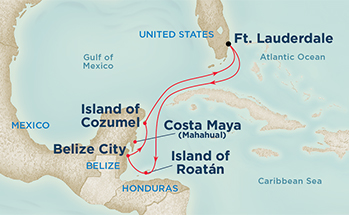 After a very successful
dive cruise in November 2015 we are ready to book the
second annual ADA dive cruise departing on November13,
2016 on the Caribbean Princess for six nights and seven
days and goes to Roatan, Belize and Cozumel all of which
are world class dive locations. It is really easy to do
when no flying is involved to get to your destination, and
the ship repositions overnight to the next dive location
while you are dining, being entertained, watching “Movies
under the Stars”, or simply enjoying the voyage. Dan and I
have taken several of these and enjoyed outstanding days
of diving, gourmet meals, and a terrific cruise
experience.
After a very successful
dive cruise in November 2015 we are ready to book the
second annual ADA dive cruise departing on November13,
2016 on the Caribbean Princess for six nights and seven
days and goes to Roatan, Belize and Cozumel all of which
are world class dive locations. It is really easy to do
when no flying is involved to get to your destination, and
the ship repositions overnight to the next dive location
while you are dining, being entertained, watching “Movies
under the Stars”, or simply enjoying the voyage. Dan and I
have taken several of these and enjoyed outstanding days
of diving, gourmet meals, and a terrific cruise
experience.
Double occupancy prices vary according to cabin from as low as $629 per person for an interior cabin to $879 for a balcony (on sale as of this writing,) not including the dive excursions which range from $119 to $200 (for a very special dive out of Belize to Turneffe Atoll), per diver, per day, including all equipment rentals. Right now the special offer Princess has is on-board credits from $75 to $150 per person. Our experience has been that if the prices drop (they usually do as the date of the cruise approaches), and you have a deposit down prior to final payment being made, Princess can give you the new rates if you contact them. So to make sure you get the cabin you want, I urge you to make your deposit now rather than later. Final payment is due August 30, 2016, and I recommend that you wait until then to make the final payment. Oh, and by the way, prices are lower if you want to book more than two to a room (four maximum). I did one dive cruise with two other divers in an interior cabin with no problems.
An additional benefit of booking the ADA Group trip is the onboard credit that each cabin will receive depending on how many cabins are booked within the group. So, how simple is it to book this trip? All you have to do is call our Cruise Planner, Karen Bradder at 1-800-901-1172 ext. 41643 and tell her that you want to book the Active Divers Group cruise and make a deposit. That’s it, no muss, no fuss and you will be ready for an outstanding trip with ADA!! I will coordinate with our cruise planner to get the dive excursions arranged for all ADA divers but be sure and go online and verify that the dives you want are booked on your reservation.
See you onboard!!
![]()
 I am not shy about
showing my Advanced Open Water Diver certification card.
After all, that card bears a photo from the 1970s when I
actually once had a full head of hair. After staring for a
moment at my flowing locks, many of those who accept my
invitation to look at my C-card seem puzzled by the name
and address of the certifying agency: Scuba Schools
International of Fort Collins Colorado. Wait a minute, a
major scuba certifying agency that has been around for 45
years is based in a landlocked state? True enough,
although SSI is more than 2,000 miles from South Florida
and more than 1,000 miles from any salt water diving in
the Gulf or Pacific, its home is also the home of Colorado
State University at the base of the Rocky Mountains in
Northern Colorado.
I am not shy about
showing my Advanced Open Water Diver certification card.
After all, that card bears a photo from the 1970s when I
actually once had a full head of hair. After staring for a
moment at my flowing locks, many of those who accept my
invitation to look at my C-card seem puzzled by the name
and address of the certifying agency: Scuba Schools
International of Fort Collins Colorado. Wait a minute, a
major scuba certifying agency that has been around for 45
years is based in a landlocked state? True enough,
although SSI is more than 2,000 miles from South Florida
and more than 1,000 miles from any salt water diving in
the Gulf or Pacific, its home is also the home of Colorado
State University at the base of the Rocky Mountains in
Northern Colorado.
Although many divers I meet have never heard of SSI, the agency has over 2,500 authorized dealers, 35 regional centers, and offices all over the world. Unlike some other certification agencies, SSI Instructors can only work through an authorized SSI Dive Center or SSI Dive Resort. Instructors cannot teach independently, which according to SSI’s website “means you won’t inadvertently take a diving certification course from someone doing business out of the trunk of their car.” The agency says that it “make[s] sure that all SSI Dive Centers, SSI Dive Resorts, Dive Professionals and Instructors are fully insured and up-to-date on all of the latest training techniques.”
Wow! What can I say about the live aboard life?! My first
experience with this was the Cayman aggressor in June
2014. My wife Rachel and I were celebrating our third
wedding anniversary, and what an incredible way to
celebrate! The Cayman Aggressor is just an amazing ship.
Over 90 feet long with beautiful State rooms, a hot tub
the dining room and a beautiful sundeck. It was boating at
its finest. From the very first dive on the wall with the
bottom of 6000 feet down to the night dives to the morning
dives, and all the other dives during the day, every
single dive was absolutely spectacular! I must admit that
because it was my first time driving on the wall I was
quite literally scared out of my mind. When I dove off the
boat the first dive I saw that wall down about 80 feet
below the boat and almost totally freaked out. But,
through some encouragement from my loving wife I was able
to make it through that first dive. As the week progressed
I got more more comfortable and more and more amazed with
diving on these incredible walls. By the end of the week I
fell in love with the Cayman Islands and this amazing
diving adventure. What was just as incredible was the fact
that I never had to change my tank over. The amazing crew
literally just filled up your tank just where it was.
Didn't have to move to BCD. Didnt have to move the tank!
It was eat sleep dive five times a day for six days. And
boy did we eat! The chef on board the aggressor was just
incredible. Every day we were treated to omelettes, fish,
and other incredible food including a big barbecue toward
the end of the week.Another treat was luxuriating in the
hot tub on the beautiful sun deck at the end of a long
strenuous day of diving. My wife were rewarded at the end
of the week by receiving the Iron Diver award which is
given to the diver or divers who participate in all 25
dives during the week. What an honor!
I can tell you without a doubt that I would absolutely do
another live aboard and in fact my wife and I did do
another Liveaboard in Belize the following year. It was
just as amazing as this beautiful trip in the Cayman
Islands. I would highly recommend to anybody who's looking
for the adventure of a lifetime to try the LiveAboard
life! It is totally worth it!
![]()
Most students are taught to vent air under water by raising the mouth piece of the oral inflator above the head and pressing the dump button. However, most BCDs are also equipped with a dump valve on the shoulder. This allows air to be dumped by pulling down on the oral inflator hose. This method is better since little water, if any, enters the BCD. If water does enter, it is important to rinse the inside of the BCD after each use. To rinse, inflate the BCD about half way, then add enough water to make it feel heavy. Move the BCD up and down, turning it top to bottom, and reverting back to the upright position. After a minute or two, dump the water by inverting, pointing the hose down, and pushing the dump button. Repeat if the water tastes salty. Of course, rinsing the outside is a given. After the BCD has dried in a cool, well ventilated area away from direct sun light, deflated it by "bear hug" squeezing while pushing the oral inflator dump button. Never, ever, deflate by inhaling the air by mouth. Unless a special anti-bacterial agent has been used in conjunction with the internal rinsing, it is likely that pathogens have begun growing inside the BCD shortly after the first use. These pathogens can cause serious lung maladies, and there is no guarantee that anti-bacterial agents are 100 % effective in eliminating all the bad stuff.
Join fellow ADA members to get in shape or to stay in shape for the upcoming dive season:
Who:ADA members or not-yet-members who want to meet us.
What: Pool swims, conditioning, skin diving skills tips.
Where: A.D. Barnes Park, 3401 SW 72 Ave. Miami.
When: Noon to 1 PM, Monday, Wednesday, and Friday
Cost: $1.50 for seniors, all others $2.50
THE POOL IS HEATED! !
Bring your mask and fins. If you want to practice free-diving also bring weight belt.
For more information, call Lon at 305-251-4975.

![]()
If so, please email or call us with your current information. you may send an email to: Dr. Dan Baeza, Membership Chair at dmbaeza@bellsouth.net. You can also call Dan at 954-260-8225 and leave a message with your new contact information.
Show your pride in the best dive club anywhere! Sizes small, medium, large, xlarge, xxlarge. Some tank tops available also. All shirts are $10 each. CALL LON AT 305-251-4975 AND PLACE YOUR ORDER TODAY!. Lon will deliver it to you on your next dive

![]()
Want your newsletter delivered via snail-mail? Contact the webmaster and request a printed copy. Be sure to put "ADA Newsletter" in the subject.


